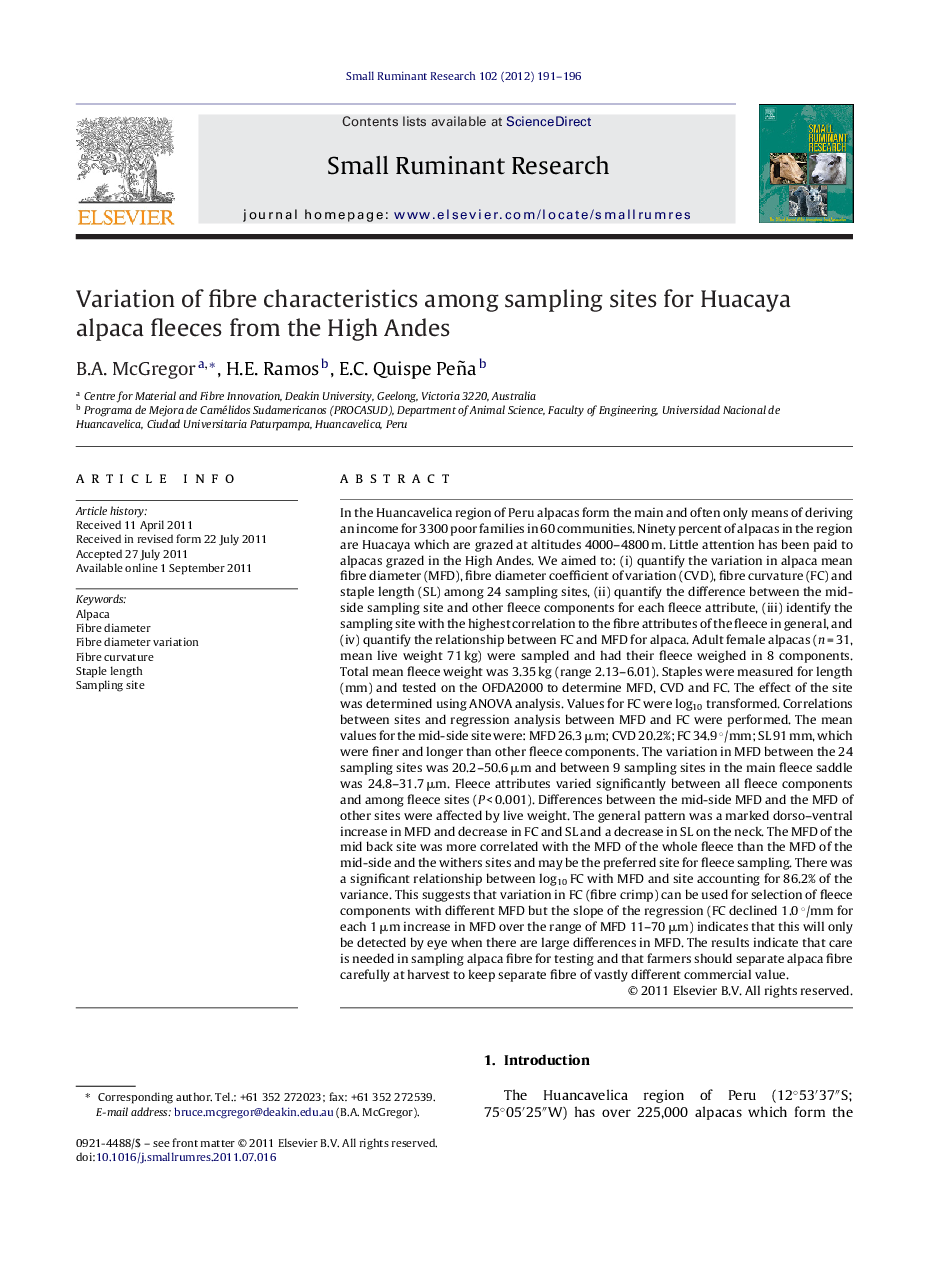| Article ID | Journal | Published Year | Pages | File Type |
|---|---|---|---|---|
| 5796359 | Small Ruminant Research | 2012 | 6 Pages |
In the Huancavelica region of Peru alpacas form the main and often only means of deriving an income for 3300 poor families in 60 communities. Ninety percent of alpacas in the region are Huacaya which are grazed at altitudes 4000-4800 m. Little attention has been paid to alpacas grazed in the High Andes. We aimed to: (i) quantify the variation in alpaca mean fibre diameter (MFD), fibre diameter coefficient of variation (CVD), fibre curvature (FC) and staple length (SL) among 24 sampling sites, (ii) quantify the difference between the mid-side sampling site and other fleece components for each fleece attribute, (iii) identify the sampling site with the highest correlation to the fibre attributes of the fleece in general, and (iv) quantify the relationship between FC and MFD for alpaca. Adult female alpacas (n = 31, mean live weight 71 kg) were sampled and had their fleece weighed in 8 components. Total mean fleece weight was 3.35 kg (range 2.13-6.01). Staples were measured for length (mm) and tested on the OFDA2000 to determine MFD, CVD and FC. The effect of the site was determined using ANOVA analysis. Values for FC were log10 transformed. Correlations between sites and regression analysis between MFD and FC were performed. The mean values for the mid-side site were: MFD 26.3 μm; CVD 20.2%; FC 34.9 °/mm; SL 91 mm, which were finer and longer than other fleece components. The variation in MFD between the 24 sampling sites was 20.2-50.6 μm and between 9 sampling sites in the main fleece saddle was 24.8-31.7 μm. Fleece attributes varied significantly between all fleece components and among fleece sites (P < 0.001). Differences between the mid-side MFD and the MFD of other sites were affected by live weight. The general pattern was a marked dorso-ventral increase in MFD and decrease in FC and SL and a decrease in SL on the neck. The MFD of the mid back site was more correlated with the MFD of the whole fleece than the MFD of the mid-side and the withers sites and may be the preferred site for fleece sampling. There was a significant relationship between log10 FC with MFD and site accounting for 86.2% of the variance. This suggests that variation in FC (fibre crimp) can be used for selection of fleece components with different MFD but the slope of the regression (FC declined 1.0 °/mm for each 1 μm increase in MFD over the range of MFD 11-70 μm) indicates that this will only be detected by eye when there are large differences in MFD. The results indicate that care is needed in sampling alpaca fibre for testing and that farmers should separate alpaca fibre carefully at harvest to keep separate fibre of vastly different commercial value.
